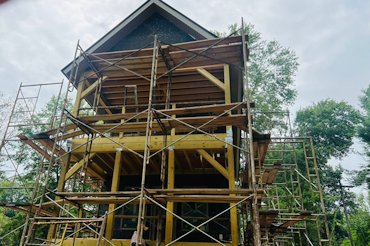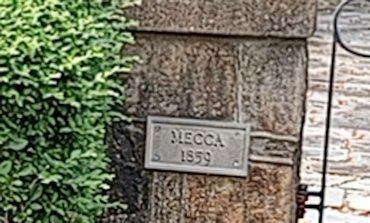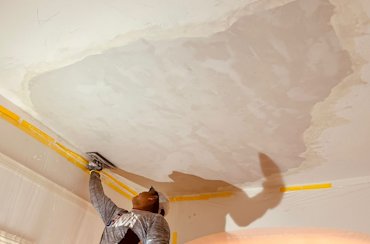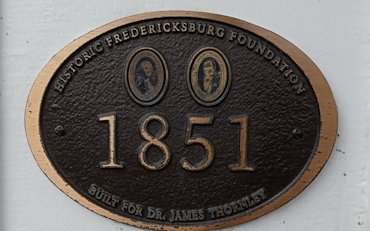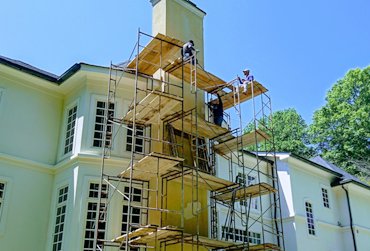
Stucco and plaster jobs in progress #180
Updated August, 2024 !
Over 25 years of jobs in progress !
Chimney re-stucco
in McLean, Virginia
24 year old chimney was like a plastic bag full of water.

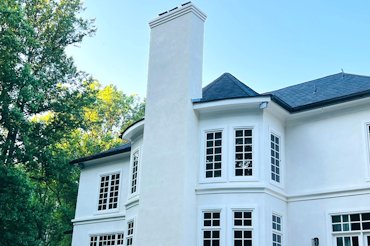
Finished chimney: We tore off the EIFS cloth, the EIFS bands, re-did the crown and the flashing, and re-stuccoed the chimney to match. This chimney should last a few thousand years this time.
The whole chimney is like a plastic bag full of water. The competition put on a EIFS cloth and an EIFS basecoat and finish over a soft crumbly cement basecoat. This method has been popular these days but it must stop.
Check out my video:
00 through 1:27-Peeling off the EIFS cloth.....1:28 through 1:42-Chipping the old cement basecoat......1:42 through 2:12 Top (cap) has gaping holes and mprtar is peeling off.....2:08 through 3:02 Synthetic finish peels off like nothing....3:02 through 3:31 Chipping old basecoat with a chipping hammer.....3:32 through 3:40 Rubber membrane on top of chimney.....3:40 through 3:50 Metal lath on cap.....3:80 through 4:12 Laying out REAL cement bands. The EIFS bands absorbed water and created damage to the chimney..... More here: EIFS bands destroy chimneys.....4:12 through end Flashing reworked. Finished chimney.
1909 townhouse re-stuccoed
Petworth area Washington, DC
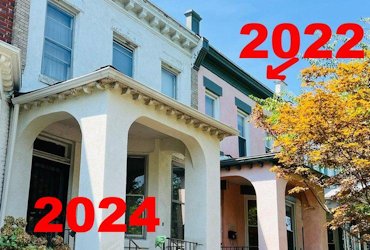
We stuccoed the house next door in 2022.
⇉ SEE HOW WE DID IT HERE ⇇
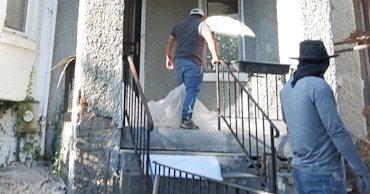
The old pebble dash stucco was real crumbly and had to go.
⇉ I MADE A PAGE FOR THIS PROJECT HERE ! ⇇
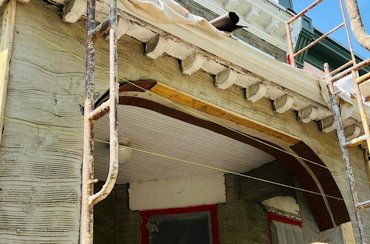
We pulled string lines to form the elliptical arches. Curves were formed with masonite.
⇉ LINK FOR MORE ABOUT THIS PROJECT ⇇
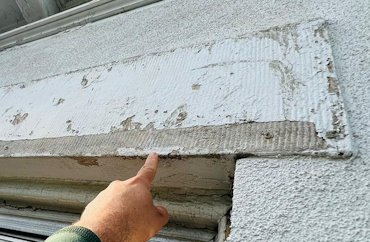
The top floor window sills and lintels were combed to look like cut limestone. This was a popular technique in Washington in the late 1800's.
⇉ SEE THE PAGE I MADE FOR THIS JOB HERE ! ⇇
Rot corrected on this Toll Brothers house
Waterford, Virginia
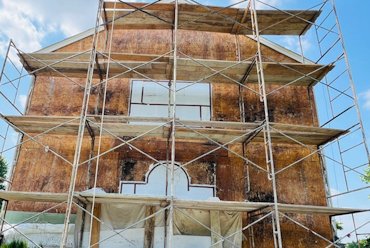
Extensive rot was caused by two large defects. The roof was leaking on the edges due to no drip edge. The windows had a gap around filled with caulking. This method rots the framing under the bottom corners of the windows.
Please read more details of this project here:
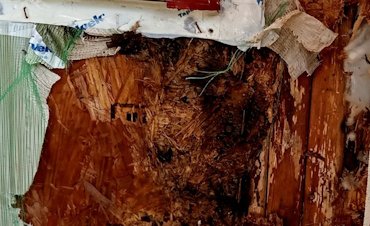
The bottom corners and in between the windows rotted out. This is caused by the practice of leaving a gap around the windows and filling with caulking.
More about how we correct this problem on the Stucco News:
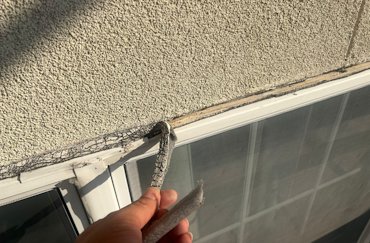
Water penetrates one coat stucco and is trapped behind this caulking. This can be prevented by putting a piece of flashing angled to deflect water away from the window.
More details here on the Stucco News:
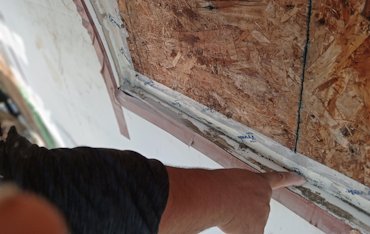
Water is still pooled on the back of the window and it is hot outside and hasn't rained in days. Pooling water runs down the sides of the window and soaks the sheathing and framing below. These multi part Andersen windows all leak in between. We correct this problem, too.
More on the Stucco News:
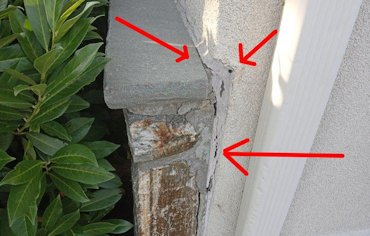
We usually don't do stone work, but this was terrible and had to be corrected.
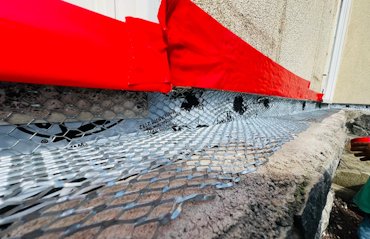
We cut off the stucco to allow the stones to go under the stucco. We put on metal lath for a good bond and used protecto tape for flashing.
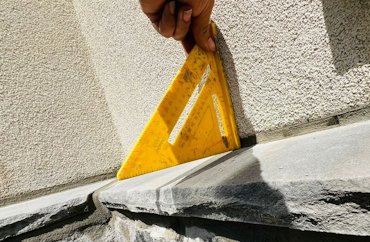
Stones are set at an angle to deflect water away from the building.
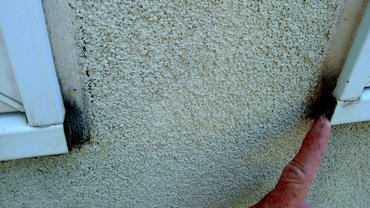
One thing done on all the Toll Bros. houses in this area is the ears are cut off the window sills. The exposed wood is rotting. We filled the holes with some goop to stop the rot. I am continually shocked at how bad the workmanship is on these houses.
Historic plaster repair
in Warrenton, Virginia
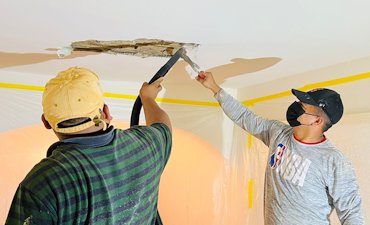
Dust is vacuumed up as the loose plaster is knocked off.
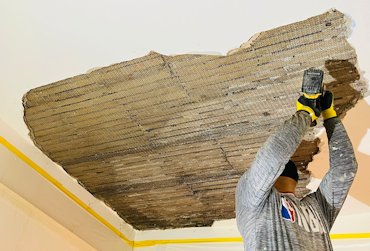
The ceiling had been replastered over the old wood lath, probably about a hundred years ago. We screwed metal lath over the old wood lath. The reason the ceiling was loose was due to nails pulling loose due to wood shrinkage.
Real lath and stucco
in Marshall, Virginia
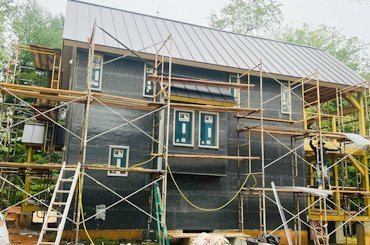
We are currently working on this house in Marshall, Virginia.
